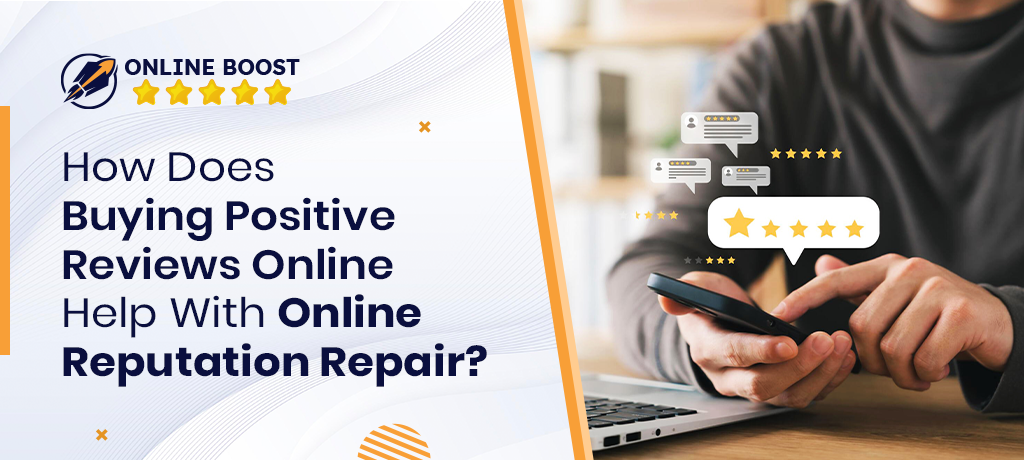
Your reputation is what people say about you when you’re not in the room.
That old saying hits differently when someone leaves a bad comment about your business online. You open your phone, read a few words, and suddenly your heart drops. We’ve all been there.
Getting negative reviews feels personal, even when you know it’s part of running a business. It can hurt your confidence, your brand image, and sometimes even your sales.
Studies show that 94% of consumers say a bad review has convinced them to avoid a business. Another report found that just one negative review can cost a company up to 30 customers.
But how you handle those moments decides whether you lose trust or build it. Responding to bad reviews the right way can actually turn unhappy customers into loyal ones and help you protect your reputation from negative reviews.
So, let’s talk about how to handle negative reviews without hurting your reputation.
Why Responding to Negative Reviews Matters
Every business owner knows that sinking feeling when you see a bad comment pop up. It’s natural to want to ignore it or delete it, but the truth is, ignoring it can quietly hurt your business.
But when you handle them the right way, those same reviews can become one of your biggest strengths.
People Read and Believe Reviews
People don’t just scroll past reviews anymore; they study them. According to BrightLocal’s Consumer Review Survey, 98% of consumers read online reviews, and about 49% trust them as much as recommendations from friends and family.
So, if your page shows bad reviews with no response, it tells people that you don’t care or that you’ve got something to hide.
One Review Can Change Buying Decisions
Just one negative review can drive people away. A study by ReviewTrackers found that 94% of customers say a bad review has convinced them to avoid a business. That’s not just one lost customer; that’s possibly dozens.
Every time you reply to negative customer feedback, you’re showing everyone else that your business listens, cares, and fixes things.
Responses Build Trust
Google’s data shows that businesses that respond to reviews are seen as 1.7 times more trustworthy than those that don’t. People trust you more simply because you take the time to respond.
Reviews Impact Sales Directly
Responding to feedback doesn't help your bottom line. According to Review Dingo, independent businesses can see a 5% to 9% rise in yearly revenue for each one-star increase on Yelp.
The better you manage your reviews, the more confident people feel about choosing you.
It Shows the Human Side of Your Brand
At the end of the day, people buy from people. When you take the time to respond to unhappy customers, it reminds everyone that your business has a human heart behind it. Mistakes happen, but it’s how you deal with them that defines your reputation.
Type of Negative Review
Not every negative review is the same, and that’s the first thing you need to understand before reacting to one. Some reviews are genuine and come from real experiences. Others might be emotional, exaggerated, or even fake.
Let’s look at the most common types you’ll come across.
The Honest Review
This one usually comes from a real customer who had a bad experience. Maybe the food was cold, the product didn’t match what they expected, or your support team took too long to reply.
These reviews sting, but they’re also the most valuable. They show you what went wrong and where you can improve. If you handle these with care and fix the issue, you show everyone else that your business listens.
The Emotional Review
Sometimes people write bad reviews in the heat of the moment. Maybe they were frustrated, tired, or had a bad day, and your business became the outlet for their anger. These reviews are often emotional rather than accurate.
In these cases, patience works better than arguing.
The Misunderstanding
This happens when a customer doesn’t fully understand a policy, feature, or service. Maybe they thought shipping was free or assumed something was included when it wasn’t. These reviews usually aren’t about poor service; they’re about unclear communication.
A simple, friendly explanation can often fix the issue and turn a frustrated reviewer into a happy one.
The Fake or Malicious Review
Unfortunately, not every review online comes from a real customer. Some are fake, posted by competitors or random users trying to harm your reputation. These are tricky, but they’re also easy to spot once you’ve seen a few.
The best way to deal with these is to respond politely, ask for details, and report them to the platform.
The Constructive Critic
This is the one you actually want. These reviewers might not be happy, but they give detailed, fair feedback. They’ll tell you what they liked, what they didn’t, and what could be better.
Respond to these with gratitude and genuine interest. It helps build trust and shows that you value customer insight.
How to Identify Which Type You’re Dealing With
| Type of Review | Common Signs |
|---|---|
|
Honest Review |
Comes from a real customer who explains what went wrong. Mentions specific details like a late delivery, a product issue, or poor service. |
|
Emotional Review |
Written in frustration or anger, often right after a bad experience. Uses strong language but gives few details. |
|
Misunderstanding |
The customer seems confused about a price, policy, or feature. Mentions expectations that weren’t met because of unclear information. |
|
Fake or Malicious Review |
Lacks real details, uses vague or general statements, or comes from an unknown account. Often doesn’t match any real customer record. |
|
Constructive Critic |
Offers balanced feedback with both positive and negative points. The tone is respectful, and the reviewer gives helpful suggestions for improvement. |
What to Do Before Responding to Negative Reviews
Before you type a single word under a negative review, take a short pause. Your first reaction is often emotional, and that’s normal. But how you prepare before responding can change the whole outcome.
Here’s what you should do first.
Take a Moment to Cool Off
Don’t reply the same minute you read the review. Step back and let that first rush of frustration pass. When you respond with a calm mind, your words come out clearer and more professional. A calm tone helps you stay in control of your online reputation management.
Read the Review Carefully
Sometimes we skim a bad review and miss important details. Read it twice. Try to understand what the customer is really saying.
Check the Facts
Before you respond, make sure you have the full story. Look up their order, the time of service, or any past messages with your team. If you can confirm what happened, your answer will sound fair and honest.
Decide Who Should Respond
It's often best if you or a senior team member responds. Customers appreciate it when someone responsible takes the time to reply.
Draft Your Response First
Don’t rush to post your reply. Write it somewhere else first, like a note or document. Read it out loud to see how it sounds. If it feels too emotional or defensive, rework it.
How to Respond to Negative Reviews (Step-by-Step)
Let’s go step by step through the best way to respond so you can turn a bad moment into a chance to build trust and strengthen your online reputation management.
Step 1: Stay Calm and Read Carefully
It’s okay to feel upset, but don’t let emotions guide your response. Read the review word for word and try to understand the core issue. What is the customer really upset about?
For example, if someone writes, “The delivery took too long, and no one replied to my messages,” you can see two problems there: slow delivery and poor communication.
Identifying both helps you respond properly instead of giving a short or defensive answer.
Step 2: Acknowledge the Feedback
Start by letting the customer know that you’ve heard them. A simple acknowledgment helps calm tension and shows you care. It doesn’t mean you’re admitting fault; it means you’re listening.
Example:
“Hi [Customer Name], thank you for sharing your feedback. We’re really sorry to hear that your experience didn’t go as expected.”
People want to feel heard. Acknowledging their feelings builds the first bridge toward resolution and helps you protect your business reputation from negative reviews.
Step 3: Apologize Sincerely
An apology goes a long way. Even if the issue wasn’t directly your fault, a kind and honest apology shows empathy. Keep it simple and genuine.
Example:
“We truly apologize for the delay and the frustration it caused. That’s not the experience we want our customers to have.”
Step 4: Explain (Without Making Excuses)
Sometimes it helps to give a short explanation, but only if it adds clarity. Avoid long justifications or blaming others.
Example:
“We experienced a higher number of orders that week, which caused unexpected delays. We’re already improving our process to make sure it doesn’t happen again.”
This shows accountability without sounding defensive. It also helps other readers understand that you take action when things go wrong.
Step 5: Offer a Solution
Every good reply includes a next step. The goal is to fix the issue or at least make the customer feel valued again. Depending on the situation, your solution could be a refund, replacement, discount, or simply a chance to talk privately and resolve the matter.
Example:
“We’d like to make this right for you. Could you please email us at [support email] so we can sort this out quickly?”
When you reply to negative customer feedback this way, it shows everyone that you care more about fixing the problem than saving face.
Step 6: Move the Conversation Offline
Not every problem should be solved in public. If the issue involves personal information or specific details, ask the customer to contact you privately. This keeps the situation professional and prevents back-and-forth arguments in public view.
Example:
“We’d love to look into this for you. Can you message us directly with your order number so we can help you faster?”
It also tells potential customers that you deal with issues responsibly, which is another part of strong negative review management.
Step 7: End on a Positive Note
Always close your reply with a polite and friendly tone. Even if the review feels unfair, finish strong. It leaves a good impression on anyone reading it.
Example:
“Thank you again for your feedback, [Customer Name]. We value your support and hope we can earn back your trust.”
Example of a Full Response
Here’s a complete example that brings it all together:
“Hi Sarah, thank you for your honest feedback. We’re truly sorry that your package arrived late and that you had trouble reaching our team. We understand how frustrating that must have been. We had a higher number of orders that week, which caused a delay, but we’re already working to improve our process.
We’d love to make this right for you, could you please contact us at support@company.com so we can sort this out quickly?
Thank you again for bringing this to our attention, and we hope we can earn back your trust.”
Step 8: Learn From the Review
Every bad review has something to teach you. Keep track of recurring complaints so you can prevent them in the future.
According to a study by HubSpot, over 60% of customers say that the way a company handles complaints directly affects whether they’ll buy again. That’s a big reason to take feedback seriously.
Some Examples of Professional Responses
Here are a few real-world examples to guide you.
Example 1: Service-Related Complaint
Customer Review:
“The staff at your salon were not friendly, and I waited almost 30 minutes before being attended to. Really disappointed.”
Your Response:
“Hi [Customer Name], thank you for sharing your feedback. We’re truly sorry for the long wait and the experience you had with our team. That’s not the kind of service we want to provide. We appreciate you bringing this to our attention and will address it with our staff right away. We’d love the chance to make this right for you, please contact us at [email or phone number] so we can offer a complimentary visit or discuss how to improve your next experience.”
Example 2: Product Quality Issue
Customer Review:
“The headphones I ordered stopped working within a week. Very disappointed with the quality.”
Your Response:
“We’re sorry to hear about your experience with the headphones. We test every product carefully, so this definitely isn’t what we want for our customers. Please email us at [support email] with your order number so we can send you a free replacement or issue a refund right away. Thank you for letting us know, your feedback helps us keep improving our products.”
Example 3: Delayed Delivery
Customer Review:
“My package arrived almost two weeks late. No updates, no communication. Very unprofessional.”
Your Response:
"Hi [Customer Name], we completely understand your frustration, and we're very sorry for the delay. Due to a temporary shipping backlog, some orders took longer than expected to arrive. We're improving our tracking system to prevent this from happening again. Please message us your order details so we can refund your shipping cost as an apology.
What to Avoid When Replying
When you respond to negative reviews, what you don’t say matters just as much as what you do say. A wrong word or tone can make things worse instead of better.
Here are a few things to stay away from:
- Don’t Argue Publicly: Never argue or get defensive in public comments. Even if the review feels unfair, arguing only makes your business look unprofessional. Stay calm and polite.
- Don’t Use Copy-Paste Replies: Generic replies like “We’re sorry for the inconvenience” sound robotic. People can tell when it’s not personal. Always write a response that feels genuine and specific.
- Don’t Blame the Customer: Avoid shifting blame or explaining too much. Focus on fixing the issue, not proving a point. A simple apology and solution go much further.
- Don’t Ignore the Review: Silence can look like guilt. Responding shows that you care and that you take bad reviews seriously.
- Don’t Share Private Details: Never post personal or account information publicly. If you need to discuss specifics, take the conversation offline.
How to Prevent Negative Reviews in the Future
<
The best way to handle negative reviews is to stop them before they happen. You can’t please everyone, but you can lower the chances of unhappy customers posting bad feedback.
Here are a few simple ways to do it:
Communicate Clearly
Most bad reviews come from confusion or unmet expectations. When people know exactly what they’re getting, there’s less room for frustration later.
Focus on Good Customer Experience
People remember how you make them feel. Make every interaction friendly, respectful, and helpful. Train your team to listen first and talk second.
Follow Up After a Purchase or Service
Check in after a customer buys from you or uses your service. A short message like “Hope everything went well” can make a big difference. If there’s a problem, they’ll tell you directly instead of writing a negative review online.
Fix Problems Quickly
If something goes wrong, solve it fast. A quick, honest response can stop frustration from turning into a public complaint.
How to Encourage More Positive Reviews
One of the best ways to balance out negative reviews is by getting more positive ones. People trust businesses that have a steady flow of good feedback.
Here are some easy and genuine ways to get positive reviews:
Ask at the Right Time
Ask for a review right after a customer has a good experience, like when they thank you, compliment your service, or make a repeat purchase. That’s when they’re most likely to say yes.
A simple message like:
“We’re glad you enjoyed your experience. If you have a minute, we’d really appreciate your review.”
Make It Easy to Leave a Review
Don’t make customers search for where to write a review. Share direct links to your Google or page in emails, receipts, or text messages. When it’s easy, more people will do it.
Say Thank You for Every Review
When someone leaves a positive review, reply and thank them. A simple “We appreciate your kind words” goes a long way. It shows that you read and value every comment.
Use Gentle Reminders
If a customer forgets, send one short reminder a few days later. Keep it polite and friendly, never pushy. Something like:
“We hope everything’s going great with your recent order. If you haven’t had the chance yet, we’d love to hear your thoughts in a quick review.”
Share Positive Reviews Publicly
Highlight good feedback on your website or social media. When customers see others sharing positive experiences, they feel encouraged to do the same.








































